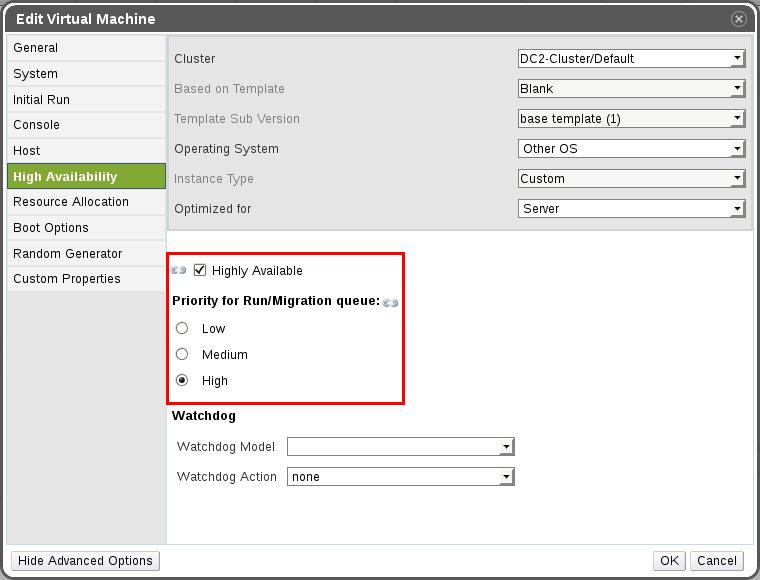In 2008, when VPS hosting made its debut, a low end VPS was priced anywhere between $30/month – $50/month. At that time, the cheapest shared hosting plan cost $5/mo. Fast forward to 2015.
Now the cheapest VPS is priced at $7/mo, while the cheapest shared hosting plan costs $4/mo. So, for just an additional $3/mo, website owners today get a service that has better performance, full autonomy, and better security.
Download oVirt Management Module for WHMCS
How to deliver the best VPS hosting services
In many ways, VPS is becoming the new shared hosting, and cloud hosting, the new VPS hosting. This is prompting many traditional shared hosts to offer VPS services.
However, many hosting providers find it difficult to compete with low cost VPS plans provided by industry big shots. The reason for this situation is the high cost incurred in using proprietary virtualization systems.
To make a proprietary virtualization solution profitable, either the number of VPS users should be very large, or the host should be willing to wait for a very long break-even period. Small and mid-size (SMB) hosting companies often find this proposition too expensive to pursue.
For mid-size hosting companies, the best point of entry to high performance VPS hosting is open source virtualization technologies. Open source technologies such as OpenVZ, KVM, OpenStack, oVirt, etc., are used extensively in production environments, and are proven to be as stable, or better than competing commercial solutions.
Most mid-size hosting companies do not choose open source technologies because of the lack of product support. That is where Bobcares makes a difference.
As part of our VPS support services, Bobcares helps web hosting companies setup, configure and maintain VPS hosting infrastructure. We recently assisted a shared hosting provider launch VPS hosting services using open source technology.
The shared hosting provider specialized in delivering reliable shared hosting to small businesses. But of late, there has been many instances of website owners migrating to VPS services of large providers, and the shared host wanted to offer a VPS service that could compete with the industry leaders.
We recommended using an open source virtualization solution called oVirt for the VPS service. It would help the customer keep the costs down, while allowing the customer to offer high quality service that could compete with industry leaders.
[ Looking for a stable server setup for your VPS hosting? Our cloud management experts will help you setup the ideal solution. ]
This is the story of how we designed and implemented the system.
oVirt VPS hosting – Design considerations
As the first step of building the solution, we listed the core features the new VPS system should have. First and foremost, it should have the level of security and speed that large service providers are often known for.
That is, VPS instances should be lightning fast at all times, and should be secure from abuses like spamming, hacks, malware etc. One VPS owner shouldn’t face the brunt of an abusive user in the system.
The second important feature was high uptime. Website owners often associated high uptime with premium service. So, it was critical that our new VPS service should be able to offer 99.9% uptime which would put it in the same league as large service providers.
The third feature was support for all popular operating systems, that included several Linux distros and various versions of Windows servers.
The hosting provider didn’t want to invest in a separate server for Windows customers, as their numbers were too small to achieve break-even. This was a crucial point, as it negated container virtualization solutions such as OpenVZ or LXD.
To be able to host multiple operating systems in the same host, true virtualization such as Xen or KVM was needed. Considering all these factors, we designed a VPS hosting solution based on oVirt (aka Open Virtualization).
oVirt is an open source virtualization system which was used as a foundation for Red Hat’s Enterprise Virtualization solution (RHEV). oVirt has been in active development since 2008, and was now mature enough to support production environments.
So, by all accounts oVirt was a safe bet for implementing true virtualization using open source technology. Here is a run-down of the top features the new system showcased:
High speed hosting
When website owners choose a virtual server over a shared account, a certain level of high performance is expected. People expect instant response times and zero load issues.
In shared hosting accounts, websites often gets bogged down by abusive accounts that drive the server load up. This is called the “noisy neighbour” problem.
Almost 90% of server load issues happen due to I/O bottle necks. An I/O bottle neck happens when a website issues a large number of I/O operations that all other websites are forced to wait on queue – which leads to very high response times.
To solve this, we configured Storage QoS in the new oVirt VPS hosting solution. This limited each account to a definite limit of Input Output Operations per Second (aka IOPS). So, no one account would be able to monopolize IO resources, and cause server latency.

Storage QoS setting that limits IOPS.
Iron-clad security
A pet peeve of shared hosting customers is the lack of adequate security in a shared environment. In shared servers, there’s always a few web masters who do not upgrade their websites.
These websites would get hacked every so often, and attackers would send out thousands of spam mails, thereby getting the server IPs blacklisted. When such things happen everyone in the server gets affected.
A VPS offers protection against such issues. As long as a web master keeps their website and server updated, it’d remain immune to hacks. With the oVirt VPS hosting system, we went one step further.
A popular form of virtualization is container virtualization, where a lot of VPS accounts shares a single Linux operating system. However, in oVirt, we used true hardware virtualization where each account is fully separated from another.
This ensures that, even in the case of a core operating system exploit in one account, no other accounts will be affected.
[ Easily manage your oVirt interface from your WHMCS – Get our WHMCS plugin for oVirt management for smooth VPS management. ]
High uptime
In shared hosting, many issues like server load spikes, security issues and hardware issues led to considerable downtime. By using hardware virtualization for our new VPS solution, we negated the load issues and security issues, but the chance of downtime due to hardware issues remained.
To guard against that possibility, we configured the oVirt system for high availability. This involved configuring the VPS host server with surplus resources, building a high performance shared storage, and enabling power management for all servers.
The high availability configuration made sure that if an account went down due to hardware issues, it would automatically be restarted in another server. The website visitors would notice a few seconds of downtime, but servers would automatically come online in less than 5 mins.

High availability configuration in oVirt
Support for all operating systems
As described earlier, the hosting provider we supported wanted a VPS solution that could host both Linux and Windows VPS in the same infrastructure. This was to accommodate a group of Windows users who were small in number, but held high value accounts.
It was not cost-effective to build a Windows VPS exclusively for these users. So, we needed a VPS system that can emulate both Linux and Windows environments.
By using hardware virtualization, our oVirt VPS hosting system allowed the deployment of both Linux and Windows servers. We created new hardware virtualized servers, and installed operating systems from ISO images.
So, for all practical purposes, these virtual servers behaved exactly like dedicated servers running different operating systems, but using the same server hardware.

Installing Windows server in oVirt
Further, these virtual servers were converted to templates, that allowed us to provision new VPSs in as little as 5 minutes. 🙂
Running a competitive VPS hosting business calls for the right choice of technology. Open source virtualization solutions are now mature enough to compete with commercial offerings.
Different virtualization solutions have different strengths, and choosing a solution should be based on careful analysis of the hosting provider’s business model.
Bobcares helps VPS and cloud hosting providers design, deploy, customize and maintain virtualized infrastructure that is custom tailored to meet their business goals. Contact Us to know how we can help you.








0 Comments